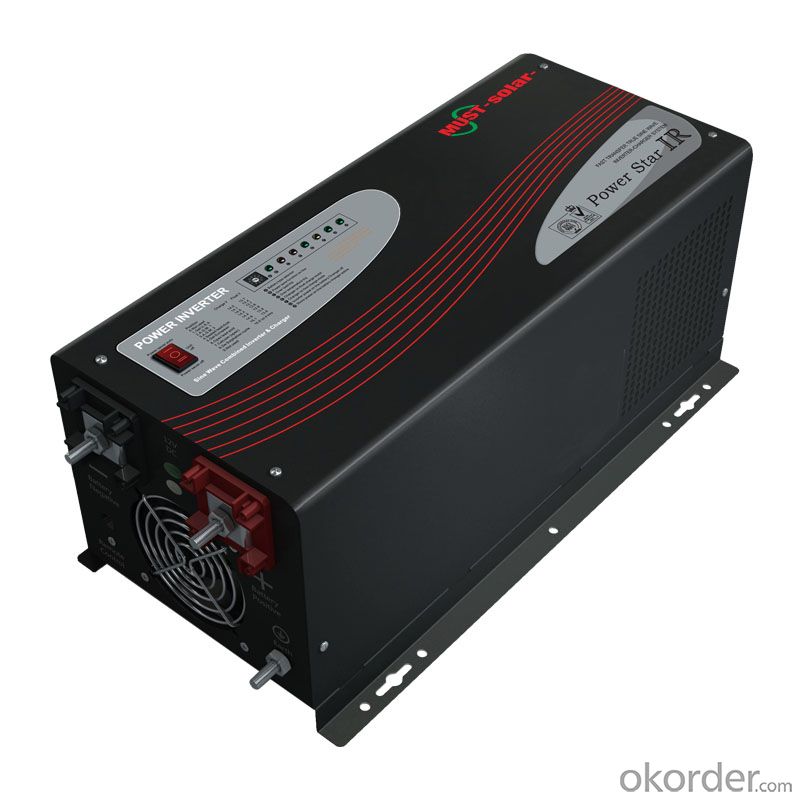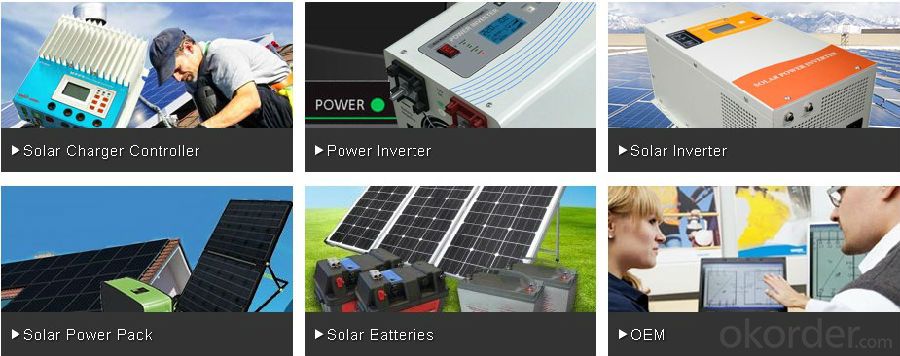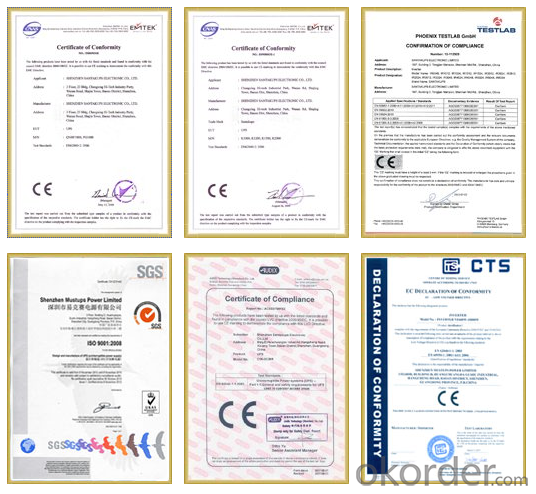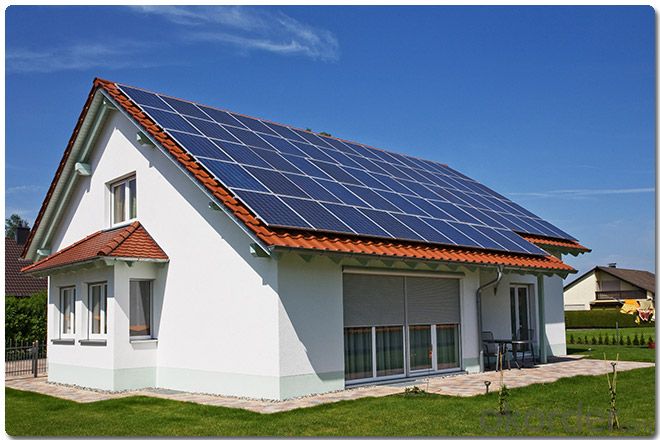2000W Pure Sine Wave InverterTop Selling South Africa CE Approved EP 3000 24V
- Loading Port:
- China main port
- Payment Terms:
- TT OR LC
- Min Order Qty:
- 100 pc
- Supply Capability:
- 1000 pc/month
OKorder Service Pledge
OKorder Financial Service
You Might Also Like
High efficiency over 90%
12Vac/24Vac/48Vac
Max.charge current 70A
Inbuilt pure copper transformer
Automatic three-stage battery Charger
RS232 with free CD(option)
Solar first function(option)
Charge current adjustable(option)
Remote control(option)
CE certificate, Soncap certificate.



| MODEL | EP3000 Series 1-3KW | ||||||
| EP3000 | 1012E | 1512E | 2012E | 2024E | 3012E | 3024E | 3048E |
| LINE MODE SPECIFICATIONS: | |||||||
| Input Voltage Waveform | Sine wave (utility or generator) | ||||||
| Nominal Input Voltage | 230Vac(120VAC selectable) | ||||||
| Low Line Disconnect | 155Vac±2% | ||||||
| Low Line Re-connect | 164Vac ±2% | ||||||
| High Line Disconnect | 272Vac±2% | ||||||
| High Line Re-connect | 265Vac±4% | ||||||
| Max AC Input Voltage | 270Vrms | ||||||
| Nominal Input Frequency | 50Hz/ 60Hz(Auto detection) | ||||||
| Low Line Frequency Re-connect | 58+0.3Hz for 60Hz;48+0.3Hz for 50Hz; | ||||||
| Low Line Frequency Disconnect | 57+0.3Hz for 60Hz;47+0.3Hz for 50Hz; | ||||||
| High Line Frequency Re-connect | 64+0.3Hz for 60Hz;54+0.3Hz for 50Hz; | ||||||
| High Line Frequency Disconnect | 65+0.3Hz for 60Hz;55+0.3Hz for 50Hz; | ||||||
| Output Voltage Waveform | As same as Input Waveform | ||||||
| Over-Load Protection(SMPSload) | Circuit breaker | ||||||
| Output Short Circuit Protection | Circuit breaker | ||||||
| Efficiency (Line Mode) | >95% | ||||||
| Transfer Switch Rating | 30A | ||||||
| Transfer Time (Ac to Dc) | 10ms (typical) | ||||||
| Transfer Time (Dc to Ac) | 10ms (typical) | ||||||
| Pass Through Without Battery | Yes | ||||||
| Max Bypass Overload Current | 30A | ||||||
| INVERT MODE SPECIFICATIONS: | |||||||
| Output Voltage Waveform | Sine wave | ||||||
| Rated Output Power (VA) | 1000 | 1500 | 2000 | 2000 | 3000 | 3000 | 3000 |
| Rated Output Power (W) | 1000 | 1500 | 2000 | 2000 | 3000 | 3000 | 3000 |
| Power Factor | 0~1.0 | ||||||
| Nominal Output Voltage (V) | 230Vac | ||||||
| Nominal Output Frequency (Hz) | 50Hz ± 0.3Hz | ||||||
| Auto Tracking Main Frequency(Hz) | Yes (Following Main first connection)50Hz @48-54Hz ;60Hz @58-64Hz | ||||||
| Output Voltage Regulation | ±10% rms | ||||||
| Nominal Efficiency | >80% | ||||||
| Over-Load Protection(SMPS load) | (110%150% ±10%:Fault (shutdown output) after 20s; | ||||||
| Surge Rating (10s) | 3000VA | 4500VA | 6000VA | 6000VA | 9000VA | 9000VA | 9000VA |
| Capable Of Starting Electric Motor | 1 HP | 1 HP | 1 HP | 1 HP | 2HP | 2 HP | 2 HP |
| Output Short Circuit Protection | Current limit (Fault after 10s) | ||||||
| Inverter Breaker Size | 10A | 10A | 30A | 30A | 30A | 30A | 30A |
| Nominal DC Input Voltage | 12V | 12V | 12V | 24V | 12V | 24V | 48V |
| Min DC Start Voltage | 10V/20V/40V | ||||||
| Low Battery Alarm | 10.5Vdc ± 0.3Vdc for 12V battery;21.0Vdc ± 0.6Vdc for 24V battery;42.0Vdc ± 0.6Vdc for 48V battery | ||||||
| Low DC Input Shut-Down | 10.0Vdc ± 0.3Vdc for 12V battery;20.0vdc± 0.6Vdc for 24V battery;40.0Vdc± 0.6Vdc for 48V battery | ||||||
| High DC Input Alarm & Fault | 16Vdc ± 0.3Vdc for 12V battery;32Vdc ± 0.6Vdc for 24V battery; 64Vdc ± 0.6Vdc for 48V battery | ||||||
| High DC Input Recovery | 15.5Vdc ± 0.3Vdc for 12V battery;31.0Vdc ± 0.6Vdc for 24V battery; 62.0Vdc ± 0.6Vdc for 48V battery | ||||||
| Power Saver | Load ≤25W (Enabled on "P/S auto" setting of Remote control) | ||||||
| CHARGE MODE SPECIFICATIONS: | |||||||
| Nominal Input Voltage | 230Vac | ||||||
| Input Voltage Range | 165V-265V | ||||||
| Nominal Output Voltage | According to the battery type | ||||||
| Nominal Charge Current | 35A | 45A | 65A | 35A | 75A | 45A | 30A |
| Charge Current Regulation | ± 5Adc | ||||||
| Battery Initial Voltage | 0 –15.7 Vdc/31.4Vdc/62.8Vdc (can operate with 0V battery) | ||||||
| Charger Short Circuit Protection | Circuit breaker | ||||||
| Over Charge Protection | Bat. V ≥ 15.7Vdc/31.4Vdc/62.8Vdc,beeps 0.5s every 1s & fault after 60s | ||||||
| GENERAL SPECIFICATIONS: | |||||||
| Safety Certification | CE | ||||||
| Operating Temperature Range | 0°C to 40°C | ||||||
| Storage Temperature | 15°C below zero to 60°C | ||||||
| Operation Humidity | 5% to 95% | ||||||
| Audible Noise | 60dB max | ||||||
| Cooling | Forced air, variable speed fan | ||||||
| Size | 1012E/1024E/2012E/2024E/2048E | ||||||
| 3012E/3024E/3048E: | |||||||
| G.W | 1kw-20KG 1.5kw,2kw-23KG 3kw-28KG | ||||||



Warrenty
provides a 1~3 year limited warranty (“Warranty”) against defects in materials and workmanship for its Uninterruptible power supply, Power inverter/chargers, Solar charge controllers, Battery Products (“Product”).
The term of this Warranty begins on the Product(s) initial purchase date, or the date of receipt of the Product(s) by the end user, whichever is later. This must be indicated on the invoice, bill of sale, and/or warranty registration card submitted to MUST-Solar. This Warranty applies to the original MUST-Solar Product purchaser, and is transferable only if the Product remains installed in the original use location.
FAQ
1. How do I decide which system is right for me ?
For protection from long outages, include a generator or solar panels in your Must solar system. Shorter outages can be handled by a battery-only system.
2. Where my system will be installed ?
Must solar systems are usually wall-mounted near a home's main electrical (circuit breaker) panel.
3. How do I install my system ?
A must solar backup inverter is connected to a home electric system , we will supply detailed installation manual and videos for our customers .
- Q:What is the role of a bypass switch in a solar inverter?
- The role of a bypass switch in a solar inverter is to provide a backup mechanism that allows the system to switch to the grid power in case of any issues or failures with the solar power generation. This ensures a continuous supply of electricity to the connected loads, even when the solar panels are not generating enough power or are experiencing problems.
- Q:Can a solar inverter be used in areas with unstable grid power?
- Yes, a solar inverter can be used in areas with unstable grid power. Solar inverters are designed to convert the DC power generated by solar panels into AC power for use in homes or businesses. In areas with unstable grid power, a solar inverter can help stabilize the electricity supply by utilizing the solar energy generated. It can operate independently or in conjunction with the grid, providing a reliable power source even during grid outages or fluctuations.
- Q:How does a solar inverter handle voltage flicker in the grid?
- A solar inverter handles voltage flicker in the grid by employing various control mechanisms. It continuously monitors the grid voltage and adjusts its own output accordingly to compensate for any fluctuations or flickering. By dynamically regulating its power output, the solar inverter helps stabilize the grid voltage and mitigate the impact of voltage flicker, ensuring a stable and reliable power supply.
- Q:What is the role of a solar inverter in voltage and frequency regulation during grid disturbances?
- The role of a solar inverter in voltage and frequency regulation during grid disturbances is crucial to maintaining the stability and reliability of the electrical grid. During grid disturbances, such as voltage fluctuations or frequency deviations, the solar inverter acts as a control device that helps regulate and stabilize the electrical parameters. In terms of voltage regulation, the solar inverter continuously monitors the voltage level of the grid and adjusts its output accordingly. If there is an increase in grid voltage, the inverter will reduce its output to prevent overvoltage conditions. Conversely, if there is a decrease in grid voltage, the inverter will increase its output to compensate and maintain a stable voltage level. This regulation ensures that the voltage supplied by the solar inverter aligns with the grid's voltage requirements, preventing damage to electrical equipment and ensuring the safe operation of the grid. Similarly, the solar inverter also plays a role in frequency regulation during grid disturbances. The inverter constantly monitors the frequency of the grid and adjusts its output frequency to match the grid's frequency. If the grid frequency deviates from the standard frequency, the inverter will modify its output frequency to bring it back to the desired level. This frequency regulation is essential for maintaining the synchronization of various electrical devices connected to the grid, preventing equipment damage, and ensuring the stability of the grid. Overall, the solar inverter's role in voltage and frequency regulation during grid disturbances is to provide stability and reliability to the electrical grid. It acts as a control device that continuously monitors and adjusts its output to maintain the desired voltage and frequency levels, thus preventing potential damage to electrical equipment and ensuring the smooth operation of the grid.
- Q:What are the potential risks of short-circuiting a solar inverter?
- Short-circuiting a solar inverter can pose several potential risks. Firstly, it can cause damage to the inverter itself, leading to a significant financial loss as these devices are expensive to repair or replace. Secondly, a short-circuit can result in overheating, which may lead to a fire hazard in the electrical system, putting the safety of the property and individuals at risk. Additionally, a short-circuit can disrupt the flow of electricity from the solar panels, potentially causing a loss of power generation and financial implications for the system owner. Therefore, it is crucial to take necessary precautions and ensure proper installation and maintenance to prevent short-circuiting of solar inverters.
- Q:How do you connect a solar inverter to solar panels?
- To connect a solar inverter to solar panels, the DC output of the solar panels needs to be connected to the DC input of the inverter. This is usually done using appropriately sized and rated solar cables and connectors. The positive terminal of the solar panel is connected to the positive terminal of the inverter, and the negative terminal of the solar panel is connected to the negative terminal of the inverter. Properly following the manufacturer's instructions and guidelines is crucial to ensure a safe and efficient connection.
- Q:What is the maximum power output of a residential solar inverter?
- The maximum power output of a residential solar inverter typically ranges from 1 kilowatt (kW) to 10 kW, depending on the specific model and capacity of the system.
- Q:Can a solar inverter be used with a solar-powered lighting system?
- Yes, a solar inverter can be used with a solar-powered lighting system. The solar inverter is responsible for converting the direct current (DC) produced by the solar panels into alternating current (AC) that is used to power the lighting system. This allows the solar-powered lighting system to operate efficiently and effectively.
- Q:Can a solar inverter be used with a monitoring system?
- Yes, a solar inverter can be used with a monitoring system. In fact, many solar inverters come with built-in monitoring capabilities or can be easily integrated with external monitoring systems. These monitoring systems allow users to track the performance of their solar panels, monitor energy production, and detect any potential issues or faults in real-time. This helps users optimize their solar energy generation and ensure the system is operating efficiently.
- Q:Are all solar inverters compatible with all solar panels?
- No, not all solar inverters are compatible with all solar panels. The compatibility between solar inverters and panels depends on various factors such as the voltage, current, and type of panels being used, as well as the specifications and requirements of the specific inverter model. It is important to ensure that the inverter is compatible with the specific type and configuration of solar panels being installed to ensure optimal performance and efficiency.
1. Manufacturer Overview |
|
|---|---|
| Location | |
| Year Established | |
| Annual Output Value | |
| Main Markets | |
| Company Certifications | |
2. Manufacturer Certificates |
|
|---|---|
| a) Certification Name | |
| Range | |
| Reference | |
| Validity Period | |
3. Manufacturer Capability |
|
|---|---|
| a)Trade Capacity | |
| Nearest Port | |
| Export Percentage | |
| No.of Employees in Trade Department | |
| Language Spoken: | |
| b)Factory Information | |
| Factory Size: | |
| No. of Production Lines | |
| Contract Manufacturing | |
| Product Price Range | |
Send your message to us
2000W Pure Sine Wave InverterTop Selling South Africa CE Approved EP 3000 24V
- Loading Port:
- China main port
- Payment Terms:
- TT OR LC
- Min Order Qty:
- 100 pc
- Supply Capability:
- 1000 pc/month
OKorder Service Pledge
OKorder Financial Service
Similar products
New products
Hot products
Hot Searches
Related keywords































